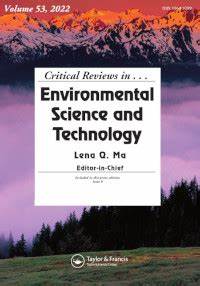制定控制处理废水中抗生素耐药性的监管指南的框架
IF 11.4
1区 环境科学与生态学
Q1 ENVIRONMENTAL SCIENCES
Critical Reviews in Environmental Science and Technology
Pub Date : 2022-06-20
DOI:10.1080/10643389.2022.2085956
引用次数: 9
摘要
抗生素耐药性是人类健康和福祉的主要威胁。抗生素耐药细菌(ARB)和抗生素耐药基因(ARGs)是在人类、动物和环境中传播的环境污染物。在城市地区,污水处理厂是这些污染物的主要接收地。尽管在处理过程中部分消除,但即使在消毒后,最终流出的废水仍含有高剂量的ARB&ARG。因此,这些污水的持续排放具有重要的不利影响,在脆弱和恶化的接收环境中(例如,由于污染、干旱或洪水、生物多样性减少),这种影响尤为严重。ARB&ARGs是能够自我复制和水平基因转移的生物污染物,由于污染引起的选择压力效应或缺乏竞争,这种能力可以在恶化的环境中增强。此外,与其他污染物一样,ARB&ARGs可以主要通过水进行运输,从而增加了作为人类接触源的循环风险。目前关于抗生素耐药性对环境污染和人类健康风险的影响的知识,以及废水处理技术和抗生素耐药性量化方法的进展,支持了实施定期废水监测系统的必要性和及时性。由于没有单一的化学或微生物参数可以用来推断抗生素耐药负荷,因此其具体监测应成为用于评估废水质量的参数的一部分。最低要求的定义和综合监测对于在时间和空间尺度上绘制抗生素耐药性地图以及设计和实施纠正措施至关重要。这些目标在技术上和经济上都是可行的,应纳入废水质量指令。图形抽象本文章由计算机程序翻译,如有差异,请以英文原文为准。
Framework for establishing regulatory guidelines to control antibiotic resistance in treated effluents
Abstract Antibiotic resistance is a major threat to human-health and wellbeing. Antibiotic resistant bacteria (ARB) and antibiotic resistance genes (ARGs) are environmental contaminants that circulate among humans, animals and the environment. In urban areas, wastewater treatment plants are the major recipients of these contaminants. Despite the partial elimination during treatment, final effluents, even after disinfection, contain high doses of ARB&ARG. The consequent continuous discharge of these effluents has important adverse impacts, which are particularly intense in vulnerable and deteriorated receiving environments (e.g., due to pollution, droughts or floods, reduced biodiversity). ARB&ARGs are biological contaminants capable of self-replication and horizontal gene-transfer, capabilities that due to pollution-induced selective pressure effects or absence of competition can be enhanced in deteriorated environments. Moreover, as other contaminants, ARB&ARGs can be transported, mainly through water, increasing the risks of circling back as a source of exposure to humans. The current knowledge about antibiotic resistance implications in terms of environmental contamination and risks to human-health, as well as the advances on wastewater treatment technology and antibiotic resistance quantification methods, support the need and timeliness of implementing regular wastewater monitoring systems. Because no single chemical or microbiological parameter can be used to infer the antibiotic resistance load, its specific monitoring should be part of the parameters used to assess wastewater quality. The definition of minimal requirements and integrated monitoring are essential to map antibiotic resistance at time- and space scales, and to design and implement corrective measures. These goals are technically and economically feasible and should be incorporated into wastewater quality directives. Graphical abstract
求助全文
通过发布文献求助,成功后即可免费获取论文全文。
去求助
来源期刊
CiteScore
27.30
自引率
1.60%
发文量
64
审稿时长
2 months
期刊介绍:
Two of the most pressing global challenges of our era involve understanding and addressing the multitude of environmental problems we face. In order to tackle them effectively, it is essential to devise logical strategies and methods for their control. Critical Reviews in Environmental Science and Technology serves as a valuable international platform for the comprehensive assessment of current knowledge across a wide range of environmental science topics.
Environmental science is a field that encompasses the intricate and fluid interactions between various scientific disciplines. These include earth and agricultural sciences, chemistry, biology, medicine, and engineering. Furthermore, new disciplines such as environmental toxicology and risk assessment have emerged in response to the increasing complexity of environmental challenges.
The purpose of Critical Reviews in Environmental Science and Technology is to provide a space for critical analysis and evaluation of existing knowledge in environmental science. By doing so, it encourages the advancement of our understanding and the development of effective solutions. This journal plays a crucial role in fostering international cooperation and collaboration in addressing the pressing environmental issues of our time.

 求助内容:
求助内容: 应助结果提醒方式:
应助结果提醒方式:


